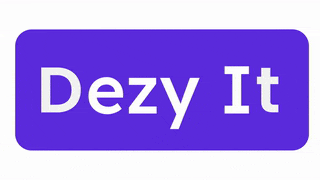Test—Try Your Solutions Out
- navjot singh
- May 25, 2021
- 3 min read
In this blog, we will be reflecting upon the final "Test" step of Design Thinking and the various things to keep in mind while Testing. Next, we will discuss how to test the Prototypes previously made and how they can cater to improving Solutions. Finally, we'll discuss the various methods in which Testing is important in Design Thinking and Design Sprints.
Testing is the chance to get a product out into the world, test it in real life, and test it in real-time. Testing is the space for users to experience the prototype without guided questions from the team. It is the opportunity for the Design Thinking team to observe and collect end process data consciously.
During the test phase, you’ll be able to observe your target users interact with your prototype and gather valuable feedback from them. You’ll learn where your prototype succeeds and where it needs improvements. The insights gathered during the testing phase will help you to create further iterations of your prototype.
Testing - Why?
Prototyping and testing, together add a great deal of value to the design process. User testing enables you to remain user-centric, and it is also beneficial in the business sense. Testing your ideas early and often can identify design flaws and usability issues before taking the product to market.
• Saves Time and Money
• Reveals unexpected insights
• Helps to improve User Satisfaction
Testing - How?
It is ideal to utilise a natural setting (i.e., the normal environment in which your users would use the prototype) while conducting User testing. You can also get users to perform a task or play a role when testing the prototype. A few things to keep in mind while conducting User Testing are:
1. Create multiple prototypes with a slight change in variables, allowing your Users to compare alternatives.
2. Avoid over-explaining the prototype. Instead, let your users experience it themselves.
3. Interact with your Users continuously while Testing. This will help to weasel out even the tiniest flaws.
4. Observe how your users are using the prototype. Try not to correct them if they seem to be doing it wrong.
5. Ask to follow up questions and keep taking feedback.
Negative feedback is highly beneficial to the Design process. If users experience difficulties, the design team must revisit their potential solutions and strategies to establish new ways to solve the same problems. Moreover, Testing can also help identify previously unconsidered problems.
Testing - Types
Testing can be done using various methods. It can be done either remotely, or in-person, or conducted in a moderated or unmoderated manner. The method of testing you choose entirely depends on your budget, time constraints, and the prototypes that you are testing. Some common User testing methods are as follows:
1. Concept Testing -
Testing the initial concept or idea early on in the process. This is done by using Low-fidelity prototypes to convey the idea to the users.
2. A/B Testing -
It is used to compare 2 different versions of a single design. Therefore, it is important that A/B testing be conducted of one variable at a time to get precise responses.
3. First-click Testing -
This shows what your users' first steps are when they encounter an interface, which helps determine which visual elements and content should prioritise, where buttons, icons, and menu items should be located, etc.
4. Tree Testing -
It is used to test how user-friendly a Design is. A representative menu layout is provided, and the user is asked to locate a certain piece of information.
5. Usability Testing -
A crucial method is testing as it helps to observe how the users interact with the product and how easy it is to use. Therefore, it should be conducted repeatedly throughout the design process.
Design Thinking is all about iterating and reiterating until your product is ready for launch. After conducting tests, you need to analyze the results. You’ll have to look for patterns in what you’ve observed and the feedback you received. Testing will either validate that something works well or highlight issues that need to be fixed. The ideal endpoint of Design Thinking is when the product or service satisfies the three tests of desirability, feasibility, and viability. However, one thing must be kept in mind: even when the product is out on the market, new tests should be conducted to add new features and improvements.



Comments